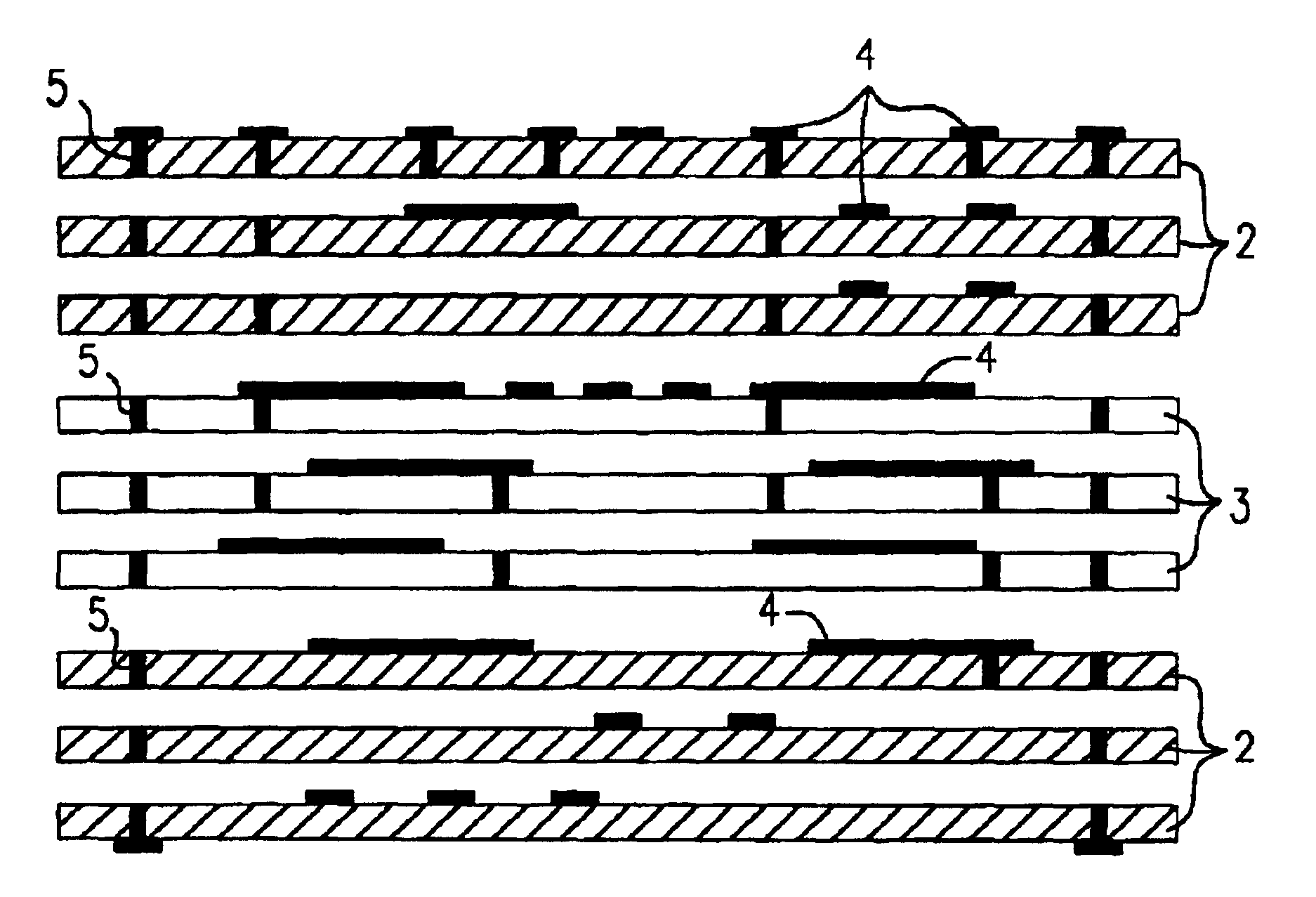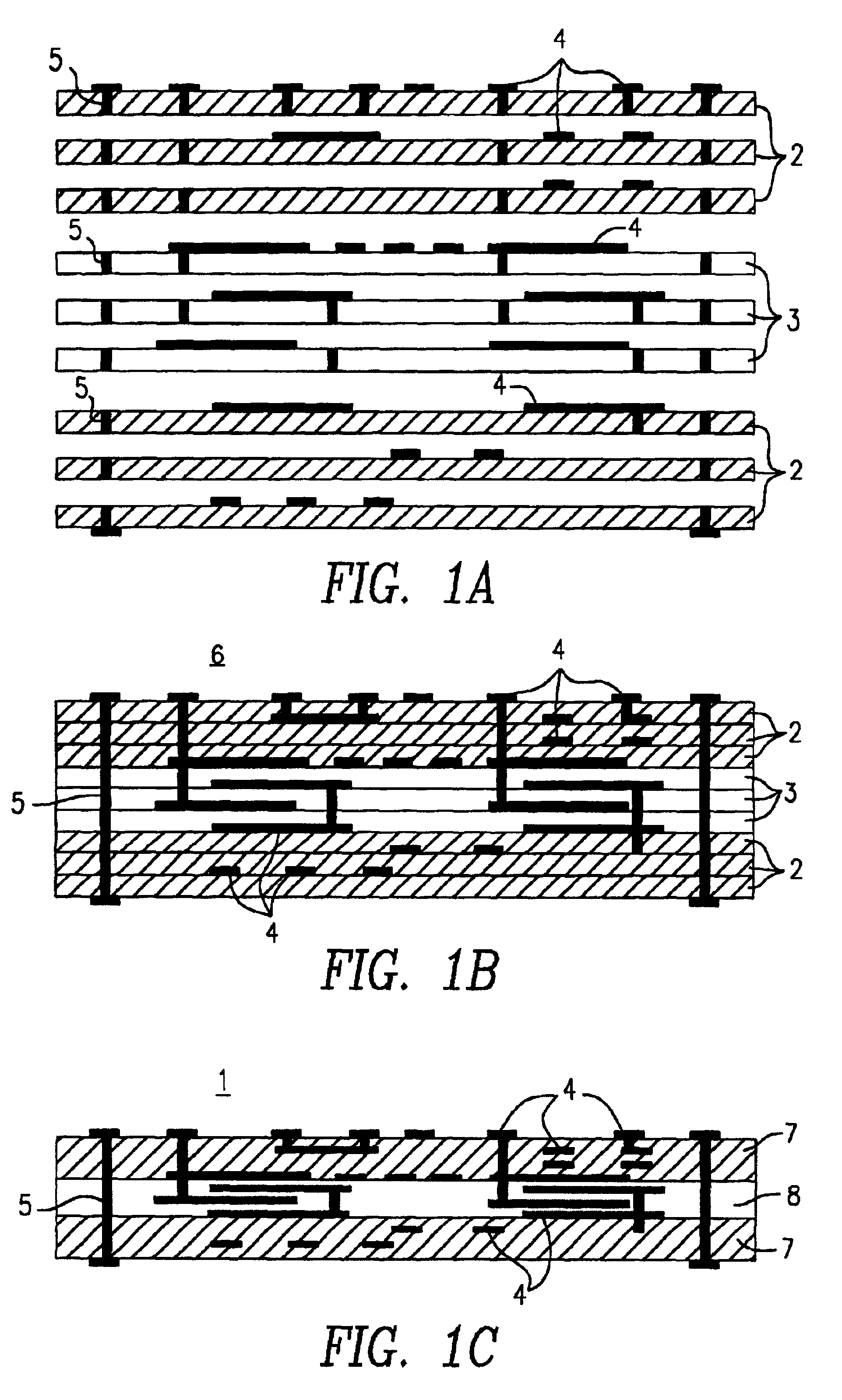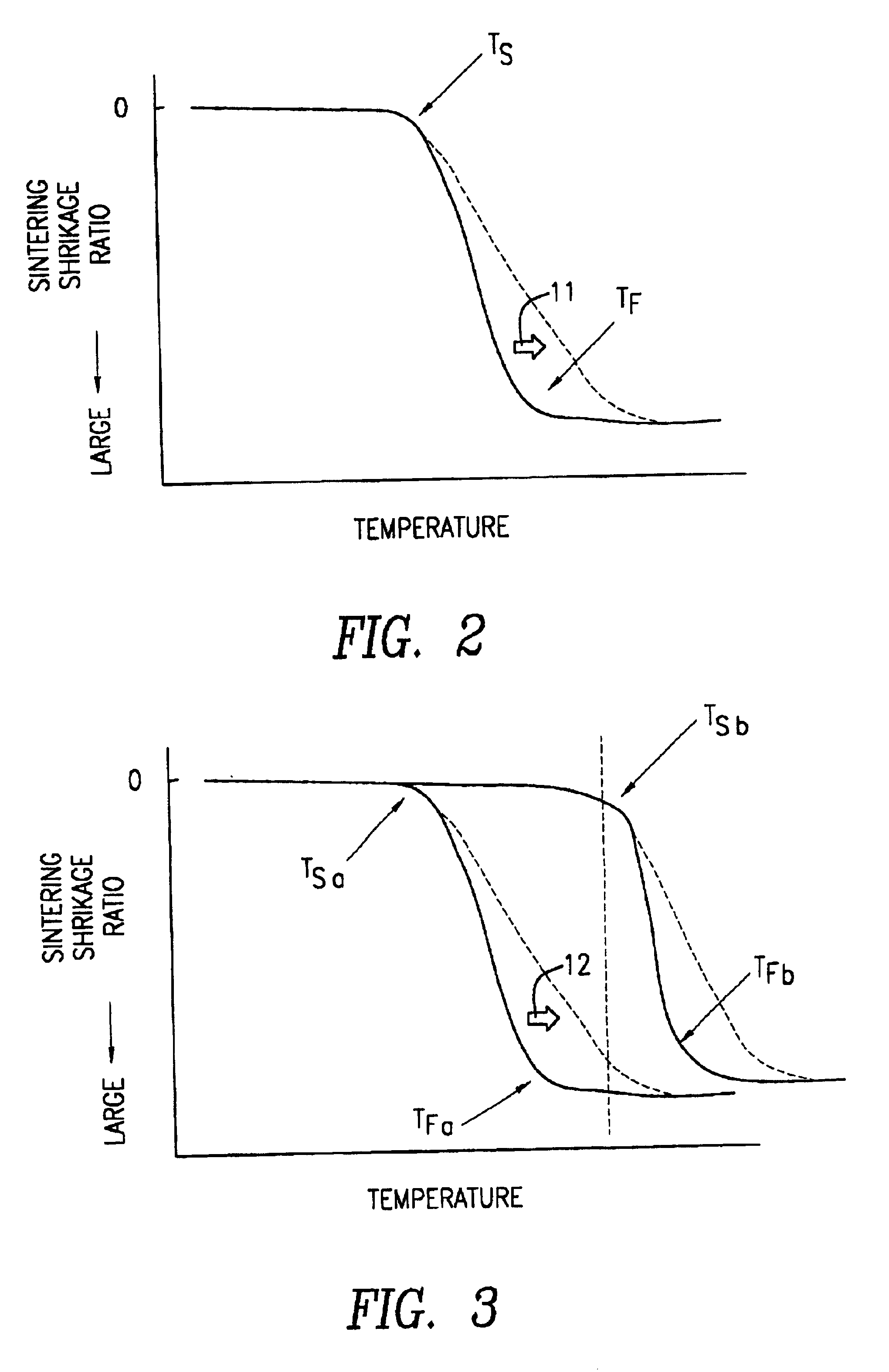Glass ceramic multilayer substrate manufacturing method and glass ceramic multilayer substrate product
a glass ceramic and multi-layer substrate technology, applied in the direction of electrical equipment, basic electric elements, solid-state devices, etc., can solve the problems of changing the shrinking behavior of glass material surrounding the wiring conductor, difficult to produce a glass ceramic multi-layer substrate which is completely flat, and the shrinkage of one glass ceramic multi-layer substrate will not always be the sam
- Summary
- Abstract
- Description
- Claims
- Application Information
AI Technical Summary
Benefits of technology
Problems solved by technology
Method used
Image
Examples
Embodiment Construction
In the following, the present invention will be described by giving an example.
BaO--MgO--SiO.sub.2 --B.sub.2 --O.sub.3 glass powder and alumina powder were mixed together using a mixing ratio of 80:20, thereby forming a powder mixture. Then, an acryl resin, a xylene resin, butanol, a plasticizer and a dispersing agent were mixed into the powder mixture, thereby forming a slurry. Subsequently, the doctor blade method was used to prepare first green sheets 2 shown in FIG. 1A.
MgO--ZnO--SiO.sub.2 --B.sub.2 O.sub.3 glass powder and BaO--Sm.sub.2 O.sub.3 --SiO.sub.2 --TiO.sub.2 ceramic powder were mixed together using a mixing ratio of 30:70, thereby forming a powder mixture. Then, second green sheets 3 shown in FIG. 1A were obtained in the same method as used for preparing the first green sheets 2.
The first and second green sheets 2 and 3 were measured to detect their shrinkage starting temperatures TSa and TSb and sintering process ending temperatures TFa and TFb (when a shrinkage is 90...
PUM
| Property | Measurement | Unit |
|---|---|---|
| shrinkage | aaaaa | aaaaa |
| glass transition temperature | aaaaa | aaaaa |
| shrinkage ratio | aaaaa | aaaaa |
Abstract
Description
Claims
Application Information
 Login to View More
Login to View More - R&D
- Intellectual Property
- Life Sciences
- Materials
- Tech Scout
- Unparalleled Data Quality
- Higher Quality Content
- 60% Fewer Hallucinations
Browse by: Latest US Patents, China's latest patents, Technical Efficacy Thesaurus, Application Domain, Technology Topic, Popular Technical Reports.
© 2025 PatSnap. All rights reserved.Legal|Privacy policy|Modern Slavery Act Transparency Statement|Sitemap|About US| Contact US: help@patsnap.com



